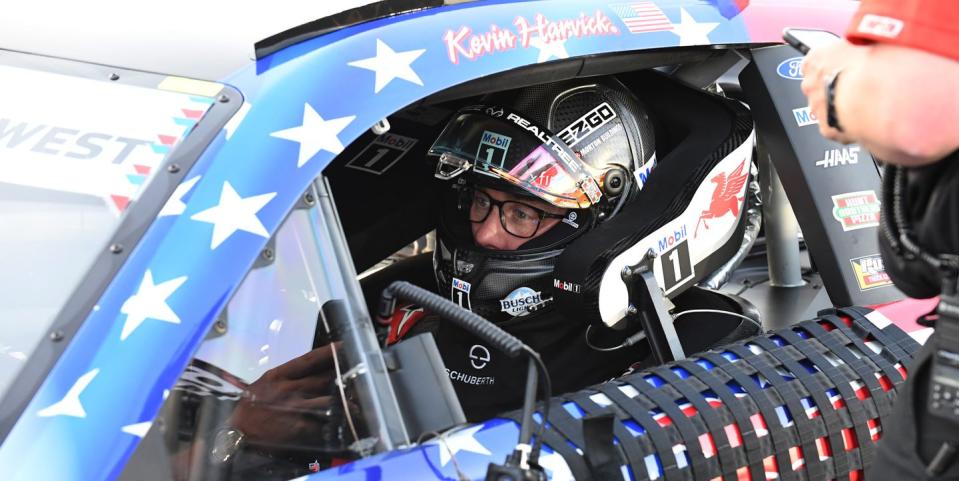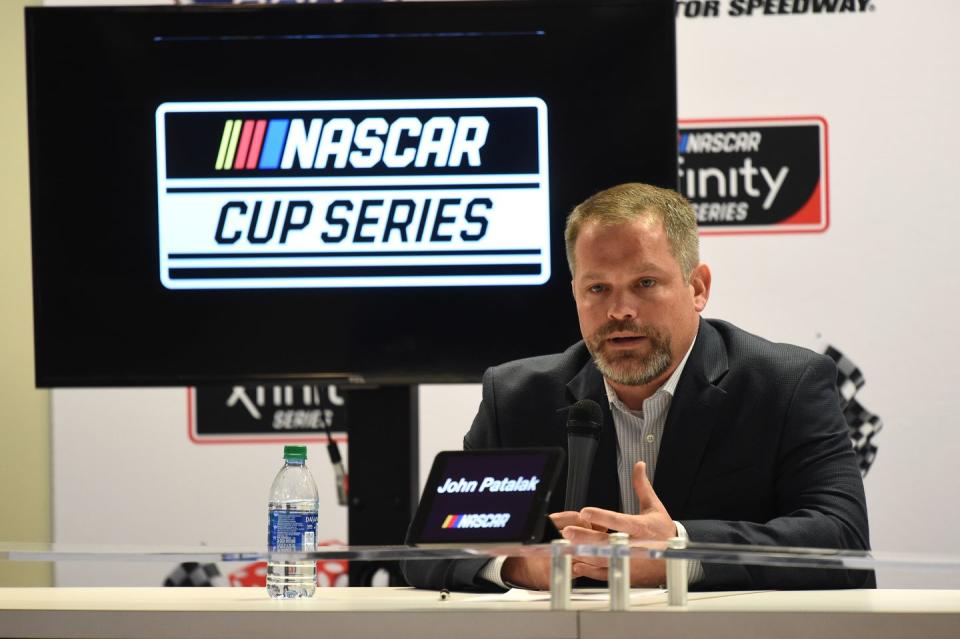How NASCAR Picks Others' Brains to Make Sport Safer

NASCAR safety official and 1994 Xfinity Series champion David Green is a firm believer that different racing series can benefit from working together to make racing safer.
Green spent his off-weekend at the Circle K NHRA 4-Wide Nationals at zMAX Dragway in Concord, North Carolina, visiting with friends and looking at driver compartments in the various cars.
During that visit, Green constantly asked himself if there was anything he saw that he could implement at the next NASCAR race.
Decades of NASCAR and NHRA racing have provided NASCAR safety official David Green with the belief auto racing could benefit from the various sanctioning bodies working together to continuously advance driver safety.
“After each event it would be so nice to be able to be on a Tuesday call with NHRA, NASCAR, John Patalak (NASCAR’S managing director of safety engineering and FIA group member), and Matt Harper (NASCAR’s safety systems director),” said Green, who competed in his last NASCAR race in 2013. “It shouldn’t take a fatality or a serious injury to kind of prompt that. I think all of the racing series all across the country have challenges.”

NASCAR’s 1994 Busch Series (now Xfinity) champion, Green spent his off-weekend at the Circle K NHRA 4-Wide Nationals at zMAX Dragway in Concord, North Carolina, visiting with friends and looking at driver compartments in the various cars. He constantly asked himself if there was anything he saw that he could implement at the next NASCAR race.
Last year Green reviewed with NHRA safety officials the items NASCAR was working on regarding driver headrest foam and seat belts.
Prior to the 2023 NASCAR season, John Probst, NASCAR’s senior vice president innovation and racing development, managed a program in which NASCAR conducted in-depth individual safety reviews with drivers at their race shops. Previously, thorough safety inspections of the race cars and driver’s equipment were done at the track.
In addition to Green, Patalak and Harper were available for the shop visits. Thirty-six drivers participated in the voluntary program. Green allotted approximately two hours for each driver and was surprised at the competitors who wanted to extend their time.
“Kevin (Harvick) has always been buttoned up, safety conscious,” Green said. “I thought I would be there about 30 minutes. Three to three-and-a-half hours later I left.”
Green said they made “several small changes” based on their conversation and he used them when he visited with other drivers.
During the meetings, Green had access to data collected by NASCAR, but he said none of the drivers requested he show it to them. He also noted that drivers who have worked on their race cars accepted the information NASCAR provided quicker than those competitors who had never turned a wrench. In those cases, Green talked with the crew chief or the team’s interior specialist. He asked those crew members to explain the actions taken to the driver.
Ultimately, under NASCAR rules, it’s the driver’s responsibility, not the sanctioning body’s to “ensure that he/she maintains, wears, and properly uses protective clothing and equipment during Competition in accordance with Section 14.3.1.1 Driver Protective Clothing/Equipment.”

After the severe Talladega crash involving Kyle Larson and Ryan Preece, both cars were taken to the NASCAR R&D Center in Concord, North Carolina, analyzed and the drivers and team members invited to review the data with officials. During the accident investigation, the incident also was recreated in modeling, Green said. Once the data had been collected, NASCAR prepared a report.
In 1984 when Ricky Rudd had his horrendous crash in the Busch Clash at Daytona, the computer analysis of accidents didn’t exist in NASCAR. A few days after Rudd’s crash, car builder Banjo Matthews collected photos showing various angles of Rudd’s car as it flipped from various news organizations so he could study the roll cage and other sections of the car to determine if they reacted appropriately.
“What Banjo did back then paved the way for what we have now,” Green commented.
Today, high-speed cameras are in all Cup Series cars. NASCAR hopes to one day have high-speed cameras in the Xfinity Series cars and Craftsman Trucks as well. NASCAR also would like to incorporate those series into its pre-season safety inspection program.
“On race morning at Talladega, we had two drivers that wanted to … make some adjustments to some belts,” Green said. “We allow the drivers and the interior guys to do that with supervision. “
Green’s safety knowledge isn’t comprised strictly of data. It also involves decades of experience.

“Every race car that I drove. Every job that I had in racing from the very beginning to the very end, I was a hands-on guy,” Green said.
The Owensboro, Kentucky, native noted his drag racing background with his father, David Lee Green, was instrumental in him noticing items in the Cup cars he wouldn’t otherwise have seen. The oldest of three boys, Green said his father drag raced every weekend in the NHRA until he and his brothers became involved in oval track racing at the local quarter-mile track. During Green’s childhood he polished the wheels for his dad’s drag car and spent the weekends at the dragstrip.
“I don’t know how many tubes and cans of that Mother’s Aluminum Polish I went through,” Green commented with a laugh. “It was tough because I wanted to watch cartoons. I wanted to be a kid for a while, but I never got that opportunity.”
Green isn’t the only family member with a NASCAR championship. His youngest brother Jeff won the 2000 Busch Series title.
When asked why the Green brothers didn’t pursue a drag racing career, he said he thought it was because “we understood that it’s tougher than most people think.”
“I’m not saying NASCAR racing, or any other oval racing is easy, because it’s not,” Green said. “It’s just a whole other mindset. You’d better be buttoned up when you hit the dragstrip. In other words, in the blink of an eye, at one point in any of those runs your day’s over.”

 Yahoo Autos
Yahoo Autos 